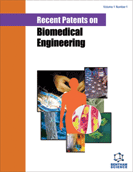Abstract
Injuries to the peripheral and central nervous system represent difficult physical challenges for those suffering from these injuries as well as a significant cost to the U.S. healthcare system. Treatment methods include electrical stimulation, improved rehabilitation techniques, cell therapies, and biomaterials. Biomaterial solutions to the challenges of nerve injury offer a potential long-term solution if used alone or in combination with other treatment modalities, and have therefore received considerable attention for product development. Controlled release of protein-based therapeutics such as growth factors is likely to be a critical design component to achieving long-term success with biomaterials. We consider the alternative approach of nucleic acid delivery through non-viral approaches as a means to achieve spatio-temporal control over growth factor delivery. We also describe promising aspects of non-viral delivery methods of antisense (e.g., siRNA) from biomaterials for nerve regeneration that could help to overcome the challenges of up-regulation of inhibitory molecules following injury.
Keywords: Controlled release, local delivery, biomedical devices, interfering RNA, gene delivery
 13
13

